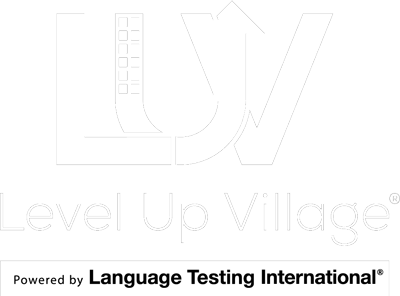Kids meeting for the first time as part of an exchange can often feel like a forced interaction and prove very awkward to watch. One of the most common and prosaic lines of questioning I’ve seen students take is the “Do you have this in your country?” approach:
“Do you guys have Monster Energy Drinks in Italy?”
“Is there Fortnite in Australia?”
“Is there pizza like this in Peru?”
“Do you guys have Chipotle in Mexico?”
I’ve always wondered why students opt for this rather obvious method of conversation. On the surface, they provide a renewable source of endless banter, but what purpose do they actually serve? Why do I hear these questions time and again? I can only suppose that these inquiries establish a sort of currency in the exchange, a baseline for what is and what is not.
“Do you have this in your country?” If the answer is no, well that’s a success because now the pupil can expound upon, however proudly or sheepishly, this one linguistic phoneme; this article that has instantly risen to artifactual prominence as a representative of that particular culture. Meanwhile, a yes answer, even when a non-sequitur, at the very least stacks a chip onto the we are alike pile. Nothing else needs to be said, and often the subject is dropped after the query has made its way to one of its binary terminuses.
Seems a bit too simplistic, right? But that’s what they do. Every time! If only we can guide our pupils to see beyond whether a peer from abroad is like or unlike them, then we can instill in them the joy of meeting someone new, someone who is both like and unlike them. This, of course, proves easier said than done.
A twofold approach can prove a helpful strategy: stay hyperlocal while finding analogs.
One suggestion I make to the student who has no idea what to say to their new friend from abroad is to open up about some local flavor—some detail that might seem trivial but actually pulls a singular thread and unravels a lot of our cultural fabric.
“Think about how crazy people get about just the differences in our own state!” I remind students. New Jersey, surely not unique in this regard, boasts certain key geo-cultural differences that remain as controversial as they are distinct. For example, a resident can fiercely align themselves to a North versus South campaign just by how they name their deli meats, or by admitting the existence of a third and elusive “central” Jersey. Minutiae like these, I tell the kids, cause fierce and animated debates among all our residents, and always spark up lively conversations. Although seemingly provincial and of little import to anyone outside our state, these details are ours. And, though I cannot fathom why, they matter.
Certainly, the rebuttal that no one would find these trivial, albeit quirky, idiosyncrasies notable holds water; however, I would argue quite the opposite. The United States purveys so much of the world’s entertainment culture that it’s unlikely students from abroad would have absolutely no context for some of our regional culture. Furthermore, these very local, very specific nuances make for really interesting conversations! They’re why we venture abroad, and they’re the reason we watch travel docuseries and food shows that cover obscure locations and voyage off the beaten path.
It’s that often untread path that also acts as a bridge between the two students, between the two cultures, because we love making connections between what is like, and unlike. That’s just how we think. But, if it doesn’t happen naturally, you can have your students ask provocative questions like, “Do you have anything like that where you live?”
Sounds like the non-sequitur question where we began, but now we have a much more open-ended prompt, and an opportunity to find the analog. Finding out that there are diagonal crosswalks in Tokyo, or that farmers intentionally let maggots grow inside Italian cave cheeses are just the kind of bite-sized facts that stimulate our imagination, fuel our dialogue, and intrigue us. They help us reach the common ground of analog.
In terms of these same-but-different elements, ask your students to compare their culturally specific regionalisms. Aren’t these arguably the same on a macro level? The American pastimes are football and baseball, but aren’t these similar to rugby and cricket? How are Parliament and Congress different from each other? On a larger scale, couldn’t these similar-yet-different aspects of individual cultures be seen as just nuances among the different regions of, say…a planet?
Comparing and contrasting cultures is not a new exercise, nor is it innovative; however, helping students perform this exercise in a way that proudly highlights their culture’s uniqueness while also creating connections by establishing similarities creates the fertile ground for budding relationships and the growth of cultural empathy. A gentle nudge in this direction could make all the difference in achieving meaningfulness through your students’ exchange.
About Dan Pieraccini
Dan Pieraccini was born in Northern Italy, but was moved to the United States at the age of 6. Dan’s B.A. in English and M.A. in Italian literature have opened the door to over a decade of teaching high school and college students a second (and in some cases a first) language. It is likely that having traveled through 82 countries, 48 U.S. states, and three disputed territories somehow factored into the decision to make Dan Delbarton School’s first Director of Global Programs. In his spare time, he manages events at his local Elks Lodge, helps feed the hungry at a handful of food pantries, writes and performs rock and roll songs with his band Forget the Whale, plays in a Dungeons and Dragons game, and occasionally goes out to brunch.




